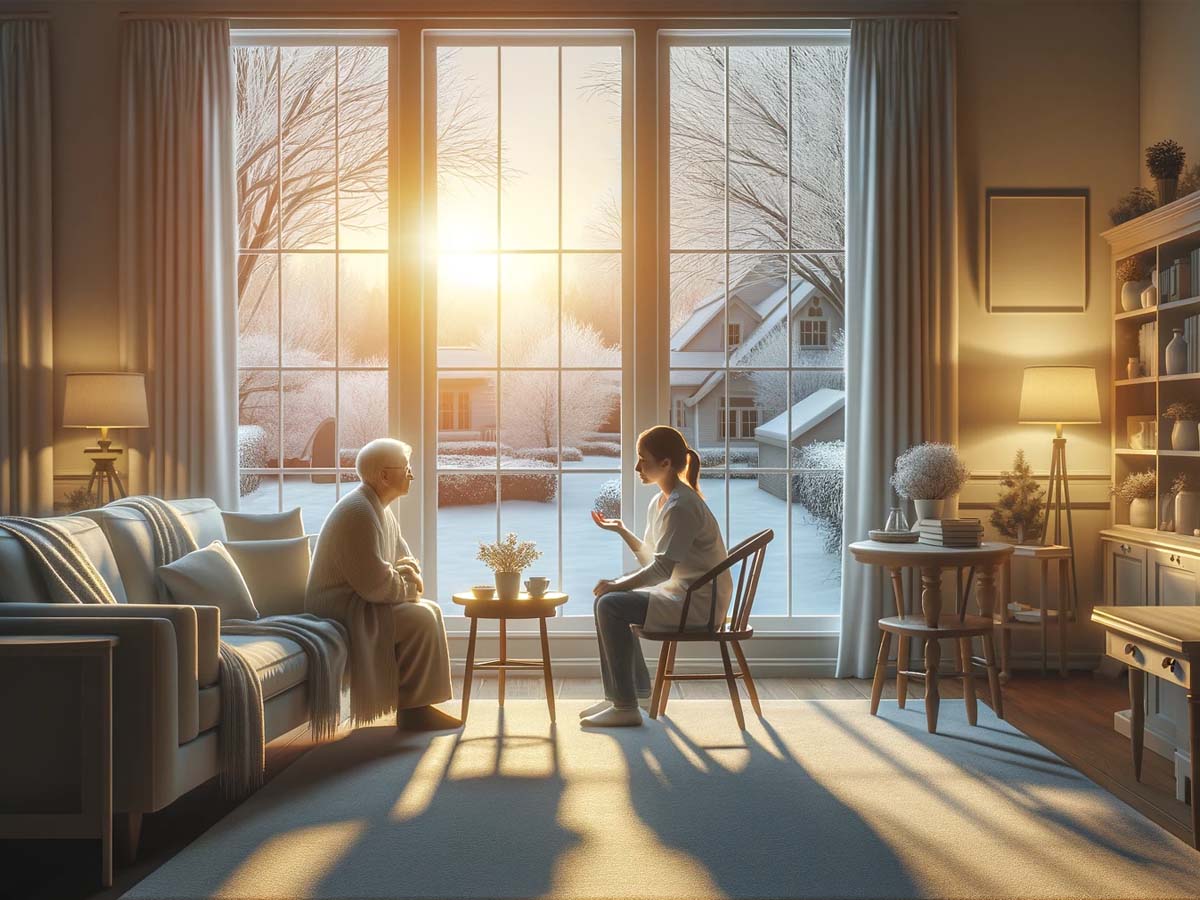Introduction
In the realm of in-home care services, especially for the elderly living with dementia or Alzheimer's disease, sundowning stands out as a noteworthy challenge. Often not given enough attention, sundowning is a phenomenon that usually occurs in the late afternoon and evening and is characterized by increased confusion and agitation. Below, we aim to bring clarity and understanding to the issue of sundowning, particularly highlighting its amplified challenges during the shorter, darker days of winter. We will share effective, compassionate strategies that our experienced caregivers use to manage sundowning, helping to ensure a better quality of life for your loved ones.
What is Sundowning?
Sundowning, also known as late-day confusion, is a symptom associated with dementia and Alzheimer's disease. It refers to increased agitation, confusion, and anxiety that typically occurs in the late afternoon and evening. This condition is not a disease itself but rather a group of symptoms that worsen as the day progresses.
The Challenge of Winter Months
The winter season can intensify sundowning symptoms due to shorter days and reduced sunlight. Lack of sunlight can disrupt the body's internal clock, leading to changes in mood and sleep patterns. This can be particularly challenging for individuals with dementia, who may already struggle with a sense of time and reality.
Strategies to Manage Sundowning in Winter
Maximizing Daylight Exposure
It's crucial to expose your loved one to natural daylight as much as possible. This helps regulate their circadian rhythms and can improve mood and sleep quality. Try to plan outdoor activities during the brightest time of the day or ensure that they spend time in well-lit rooms with windows.
Keeping a Consistent Schedule
Routine is key in managing sundowning. Try to maintain a regular schedule for meals, bedtime, and activities. This predictability can be comforting and may reduce evening agitation.
Light Therapy
In cases where natural light is not sufficient, especially during the dark winter months, light therapy can be beneficial. Light therapy involves exposure to a lightbox that simulates natural outdoor light, which can help regulate sleep-wake cycles and improve mood.
Creating a Calm Evening Environment
As evening approaches, create a calm and comfortable environment to help ease the transition into nighttime. This includes dimming bright lights, reducing noise, and engaging in soothing activities such as listening to soft music or reading.
Nutritional Considerations
Certain dietary choices can affect sleep patterns and mood. Avoid caffeine and sugar-laden snacks in the evening, as they can increase agitation and disrupt sleep.
Sundowning can be a challenging aspect of dementia care, especially during the winter months when daylight is scarce. However, by understanding this phenomenon and implementing strategies such as maximizing daylight exposure, maintaining a consistent routine, using light therapy, and creating a calming evening environment, caregivers can significantly improve the quality of life for their loved ones. Remember, each individual is unique, and what works for one person may not work for another. It's important to stay patient, keep experimenting with different strategies, and consult a professional when needed.
References
-Alzheimer's Association. (n.d.). Sundowning. Retrieved from Alzheimer's Association website
-National Institute on Aging. (n.d.). Sundown Syndrome in Older Adults. Retrieved from National Institute on Aging website
-Mayo Clinic. (n.d.). Alzheimer's: Managing Sleep Problems. Retrieved from Mayo Clinic website
If you or someone you know is in need of extra care at home, please don’t hesitate to call:
HOME HELPERS HOME CARE OF DREXEL HILL

